The Affordable Accuracy Monitor is the ideal speaker mod. It takes a fairly decent, plentiful speaker that you can often find on fire sale at big box stores and turns it into something beautiful via some elbow grease, and not a lot of parts. Pioneer doesn’t make the original speaker used as a basis for the Affordable Accuracy Monitor speaker any more, in part because the ecosystem that allowed them to sell those speakers at that price has changed radically. But the Affordable Accuracy Monitors are still beautiful speakers, a mod designed by DIY legend Dennis Murphy. It’s an incredible mod to do if you happen upon those old Pioneers, and one that tells you a story larger than itself.
You often don’t get into DIY speakers to save money in much the same way that you don’t get into home brewing beer to save money. You can just buy good, accurate speakers now in the same sense that you can just buy good beer. In the case of both hobbies, you get into it because you want something, such as the sense of satisfaction that you have made something truly yours.
Speaker Designer Dennis Murphy got into DIY a long time ago because he was unsatisfied with what was currently on the market. “At the time, and it was a looooooooong time ago, companies like Acoustic Research, KLH, and JBL dominated the speaker market, and each brand had its own type of company sound, none of which were accurate,” Murphy told me, saying that companies did not optimize driver locations on the baffle to limit interaction effects. “The result was usually [a] highly colored sound that I, as a semi-professional violinist, found particularly annoying.”
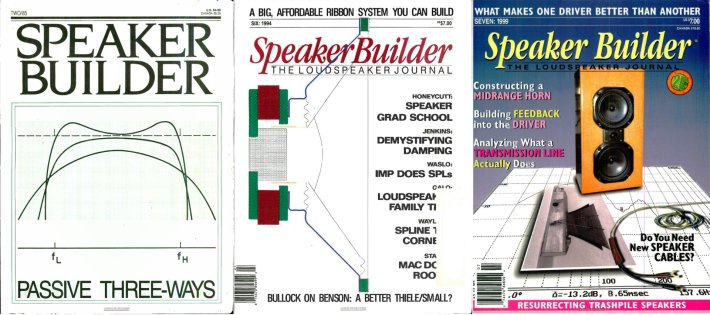
Murphy dove headfirst into DIY, tearing through old issues of audio magazines like Speaker Builder, attempting to build kits but being largely unsatisfied. Towards the end of the 90s a few key things changed – measurement equipment and computer software became affordable to home hobbists and forum culture erupted. “The Internet made discussion groups such as the Madisound Forum available, which greatly facilitated the exchange of ideas and product information.”
After winning a speaker designing contest sponsored by DIY component retailer Madisound, Murphy found himself designing crossovers – the circuit inside passive speakers that splits the audio signal between drivers like the tweeter (for high frequencies) and woofer (lower frequencies). These found their way into commercial products, the first being the Ellis 180lb for Dave Ellis. From there, Murphy moved on to designing speakers for Jim Salk. In 2012, he quit his full time job as an economist for the Federal Trade Commision to start a speaker building company – Philharmonic Audio, named after the Washington Philharmonic Orchestra. “I was particularly interested in offering affordable speakers that excelled in reproducing the sound of a symphony orchestra faithfully and that were based on science rather than expensive gimmicks.”
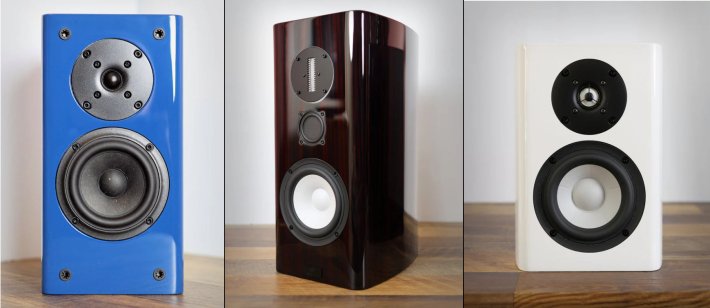
By all accounts Murphy has succeeded on that front. One needs only read any part of the (as of this writing) 1611 page AVS Forum thread dedicated to Murphy’s company, which Philharmonic Audio proudly links to. Both the BMR and the Ceramic Mini seem like well-loved and fantastic deals, with the latter being reviewed and measured quite favorably by Erin’s Audio Corner, a well-known audio YouTuber who I tend to trust in these matters. Importantly to me, Murphy is a forum guy through and through, responsive via email and who still posts on forums to this day.
Andrew Jones, Pioneer, And The Affordable Accuracy Monitor
This brings us back to the mod. Back in 2012, speaker designer Andrew Jones designed a line of passive home theater speakers for Pioneer. An update to his previous model, the entire system was lauded by home audio enthusiasts for being an incredible value for the money, in particular tiny bookshelf speakers the Pioneer SP-BS22-LR. They retailed for about $130 and sold like hotcakes, often being put on clearance at Best Buy for as low as $60.
“The Andrew Jones family of Pioneer speakers made quite a splash when they were introduced around 2012,” Murphy told me via email. “Several of my audio friends wrote to me raving about how high [quality] the cabinet and sound was for such affordable speakers.” Unable to resist, Murphy would soon order the line and get to work attempting to tweak the imperfections in the speaker.
“Although I thought the bass response was impressive (particularly for the monitor), the lower treble and upper midrange sounded murky.” After some attempts to design the crossover, Murphy realized the issue was an intrinsic flaw in the waveguide in the tweeter (which handles high frequencies). He swapped it out with an inexpensive but good Vifa dome tweeter. “Once I had redesigned the crossover to optimize the response for the new tweeter, the problem was gone and the overall sound was the best I had heard in an entry-level speaker,” Murphy recalled. The Affordable Accuracy Monitor was born.
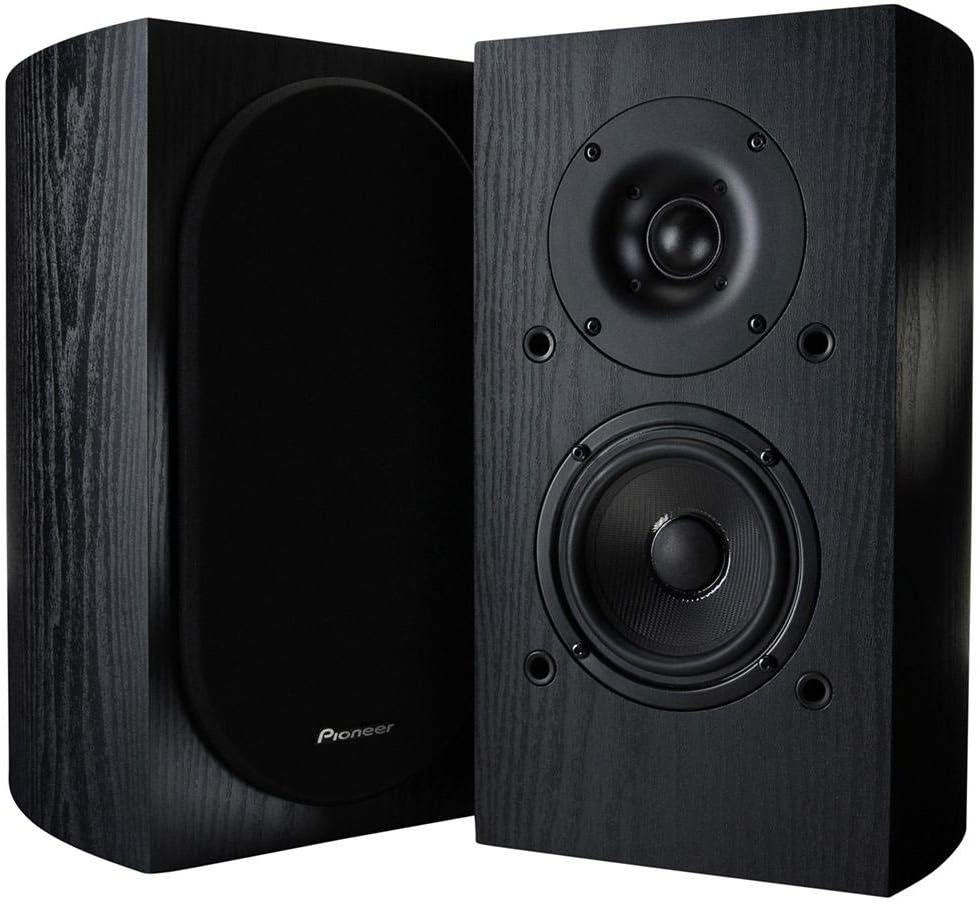
Dennis started selling this mod. He would seek out the Pioneer bookshelves whenever they went on clearance, putting in $86 worth of parts and selling them for close to the original MSRP of the unmodified speakers. It was an incredible deal, one that I cannot imagine was terribly profitable for the amount of time and care that Murphy put into them. By 2015, Pioneer had stopped producing the line, and Jones eventually moved on to ELAC, where he made a splash once again with the Debut series before moving on to a different company.
Murphy went on to revise the mod a few times based on the BR-1 kit from Parts Express, dubbing it the “Affordable Accuracy Plus.” “I finally came to my senses about a year ago and retired the Affordable Accuracy kits for good,” Murphy told me. Meanwhile, he put the design for the original Affordable Accuracy Monitor into the public domain, allowing anyone to tweak the old Pioneers if they happened to find them. That’s exactly what I set out to do.
MDF, Glue, and the perfect entry level speaker.
I’ve wanted to create Affordable Accuracy Monitors for several years now. I was originally inspired by a glowing review on the Audio Science Review forum in 2020, and this urge was reinforced by seeing stock Pioneers used on secondary markets for cheap. I was not seeking my endgame speaker. I needed to know how much speaker you could get from modding a used speaker with less than a hundred dollars worth of parts.
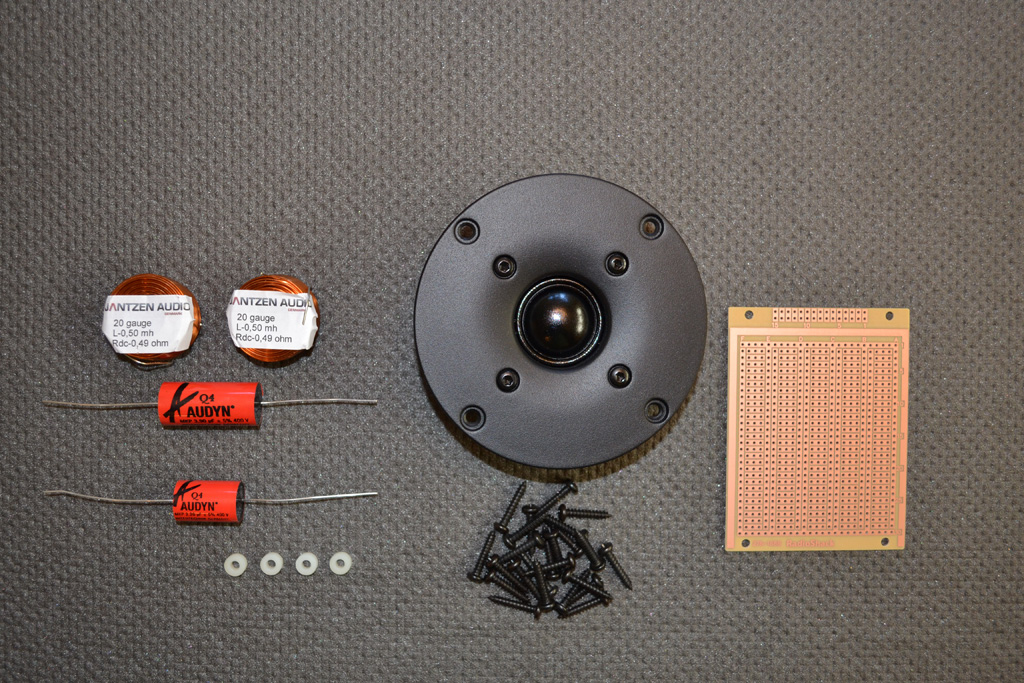
I snagged two bookshelves and a center channel from a guy on Facebook Marketplace who was upgrading his system. Murphy had briefly offered a matching center using the SP-C22, although the mod is far less documented than the bookshelves. I ordered a handful of parts off of Parts Express and Digikey since the Vifa tweeter appeared to only be in stock at the latter.
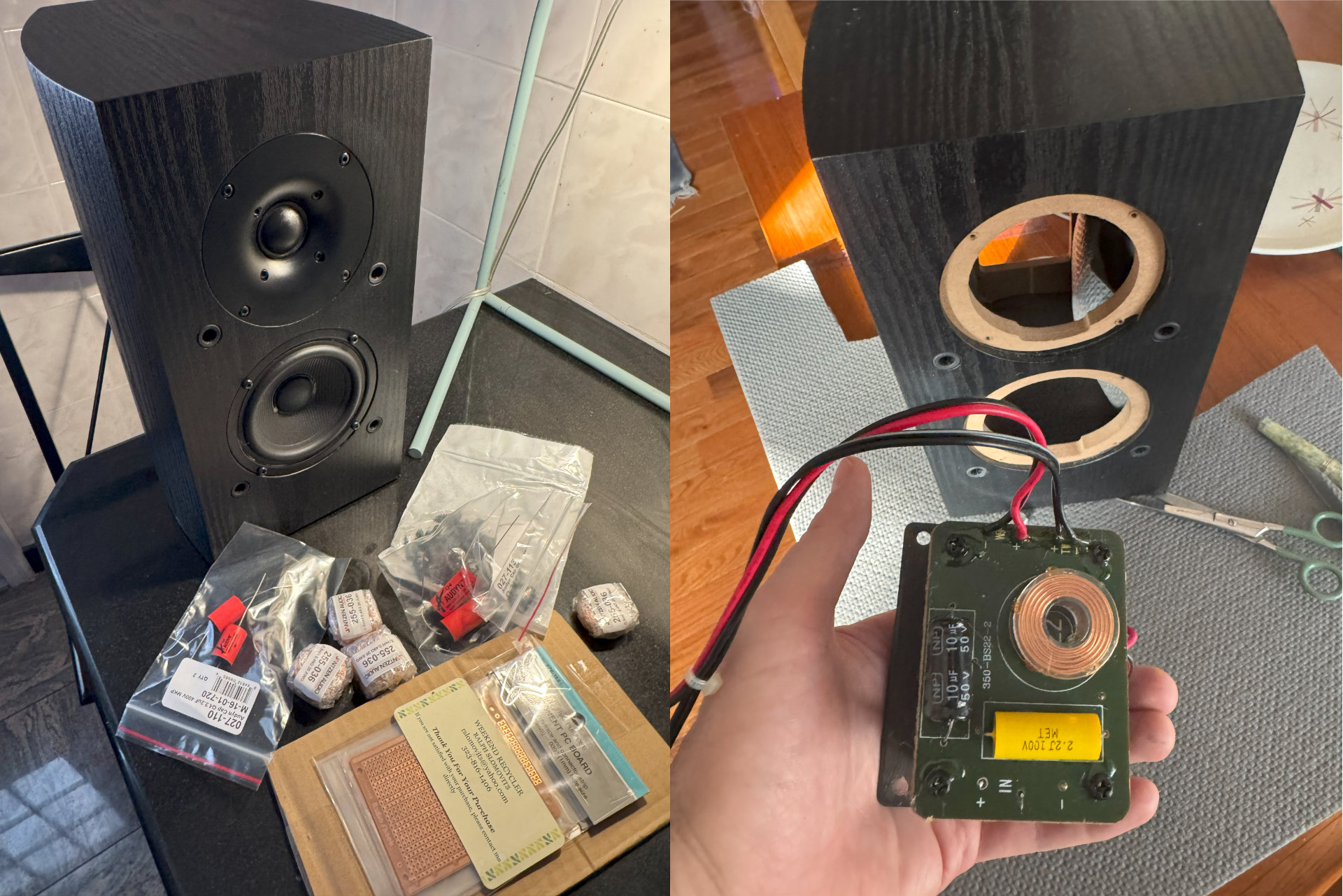
The Affordable Accuracy Monitor mod (detailed instructions can be found here, although they vary from how Dennis himself performed the mod) does several key things. First, it improves the internal reflections of the speaker by adding deadening material inside the bottom half of the cabinet. The stock speaker already has some inexpensive polyfill material, which the mod reuses. Second, the stock tweeter is swapped out for the Vifa tweeter, although the rubber gasket in the back of the original is retained or (as Dennis originally did) replaced with VHB Gray Acrylic Foam Tape. Retaining the gasket is an invention of the AudioKarma poster, and it requires you to remove the gasket carefully using a single-sided razor blade or an exacto knife. In addition, the hole for the tweeter must be enlarged with a small notch to account for the clearance of the new tweeter's terminal tabs, which are in a different location. This is done with either a rotary tool like a dremel or a file.
From there, the meat of the mod happens: modding the crossover. The stock crossover of the SP-BS22-LR is comically simple, with a handful of parts like resistors and capacitors and a single air core on a double-sided PCB. The crossover is removed from the cabinet, and a handful of the parts are desoldered from the board. Some are harvested to build the new crossover, and a few are left on there, while the air coil is removed completely. The genius of the mod is that it reuses the existing parts to make the new crossover, thus reducing the cost to the user. The one downside of this is that, in addition to being soldered on, the parts are also glued to the board. This means that solvent or light heat must be used to loosen and remove the glue, because it will gum up your soldering iron.
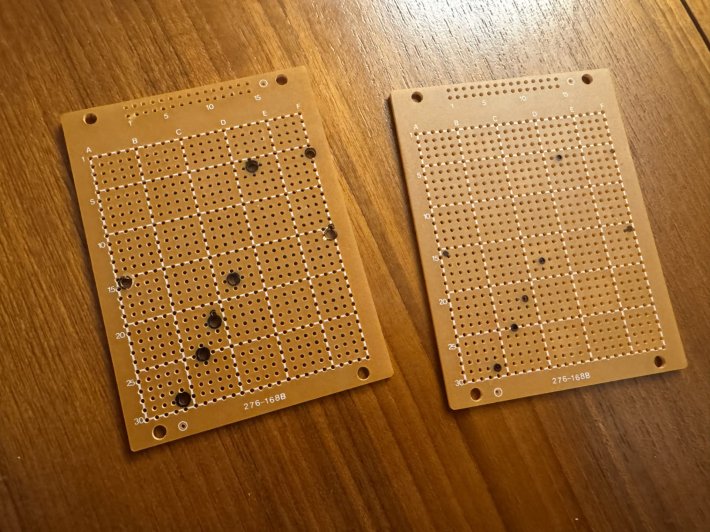
From there, you need to build the other half of the crossover. The AudioKarma post for this involves using a perf board, an adaptable off-the-shelf circuit board meant for tinkerers, although Dennis himself originally used a pegboard and attached the components with pull-ties. The AudioKarma write-up of this mod is old enough that the original poster used a Radio Shack 276-168 PC Board, which they don’t make anymore because Radio Shack really doesn’t exist in the same capacity now. Someone actually made exact replicas of these a few years back, since they are often referenced in books going back decades, and Adafruit makes a Perma-Porta replacement that is somewhat similar. I opted to pay for a deadstock Radio Shack board out of a sense of nostalgia. Both the pegboard and the perf board work but the pegboard approach does not require the use of a drill and may be easier for many people.
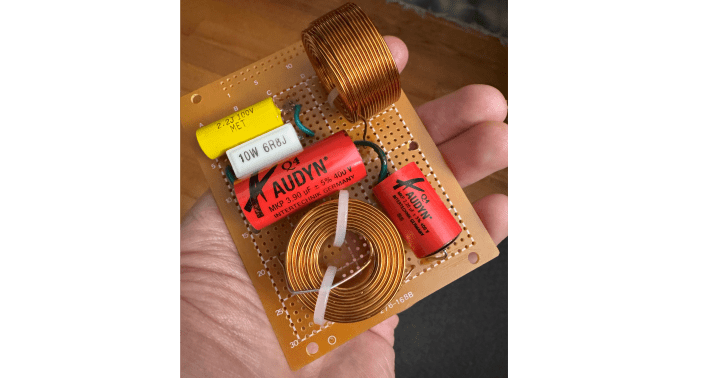
From here, you have to solder the correct components and wires to the board to create the required circuit. Holes have to be drilled into the perf board at specific locations to not only mount the crossover, but provide spaces for zip ties to go to secure the heavy copper air cores to the board. Once this is done, the original PCB and the new one are sandwiched and soldered together, separated by nylon spacers. The parts are gluegunned to the board to make them more stable, the wires are reconnected at the right points, and the new board is screwed together. The drivers and crossover are returned to the newly padded cabinet with more durable wood screws. Everything else is tightened up and connected. Repeat this process for the number of speakers you are making.
Though it is easier to do this process to two speakers at once, I did one speaker first to get a good sense of how different a change the mod made. After I finished one, I connected both the unmodified Pioneer and the completed Affordable Accuracy Monitor to a cheap but solid amplifier. I listen to both – first one at a time and then together. The result was dramatic, and even my girlfriend who isn’t a dweeb like me about this stuff could pinpoint the difference immediately. The ugliness of the stock tweeter was laid bare as being shrill and fatiguing. Meanwhile, the completed speaker had a character of its own: smooth and effortless without sacrificing detail. It was not the best speaker I had heard in my life, but it reached far beyond its humble part list.
With a new rush of excitement, I quickly got to work the next day finishing the mod on the other speaker, a faster process because I knew exactly what I needed to do. By evening I had two Affordable Accuracy Monitors in front of me on a table, plugged into my little cheapo amp. I played some music, and what I heard made my jaw drop. These things were fantastic. Though they were small and needed a subwoofer to really open up, everything in the mids and highs sparkled. The tracks that complemented them sounded clean and vivid, playing with a shocking clarity. I was overcome with pure joy and I could have sat at that small table listening for hours and hours if it wasn’t so late.
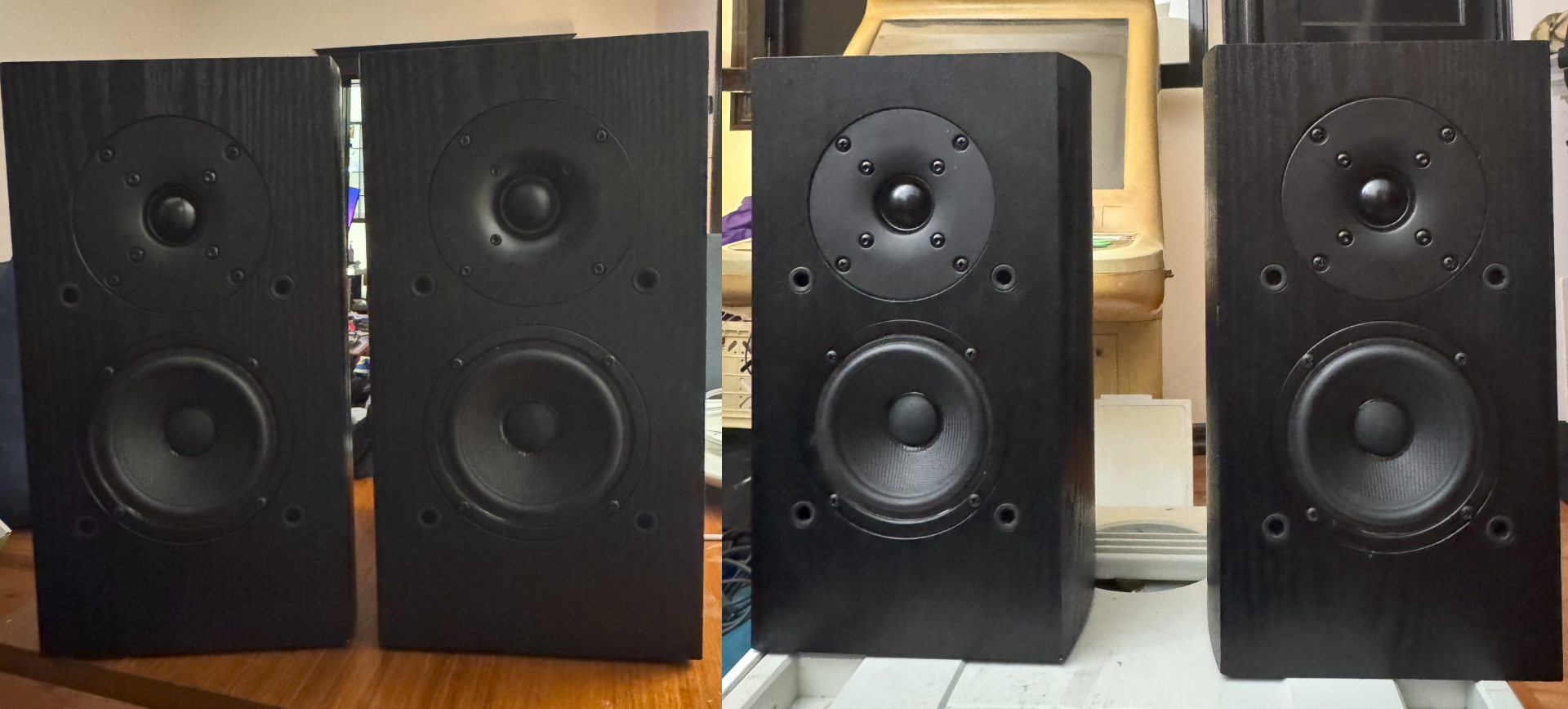
I had found what DIY speaker builders so often seek, a sense of fulfillment at having built something special. It’s not just that the speakers sounded good, there is no shortage of great-sounding audiophile equipment. I was not just hearing music, but also my labor and the skills I had learned. I had made something, or at least half of something, that was precious to me.
The Affordable Accuracy Monitor Is Dead
We can learn a lot about DIY from the Affordable Accuracy Monitor, but it is worth noting that it existed in a singular moment in time. The conditions that created it were ideal – a shockingly good passive speaker sold at high enough volume to go on sale frequently coupled with a particularly talented designer digging inside it to make it sing. But several parts of that equation have changed. The market segment that the Pioneers occupied is now full of sound bars and active speakers. “There will almost certainly be an increasing emphasis on active designs with built-in dsp and room correction,” Murphy told me.
The passive speakers on the market that remain are finely tuned and the value proposition of upgrading them instead of buying a slightly better speaker is often questionable. There are tons of good speakers out there without much tinkering, like the ELAC’s debut line — in some ways the natural successor of the Pioneer line.

“I don't see a bright future for DIY as a means of achieving greater bang for the buck,” Murphy told me. “More and more brand-name manufacturers are outsourcing cabinet construction to Asia and are designing speakers that follow the teachings of Harman research. The result is a greatly increasing supply of high-value commercial offerings.”
There will always be people messing around with MDF, wires and glue in search of something special, there’s plenty of examples on Facebook groups or forums like DIYaudio. And it’s worth mentioning some truly great, affordable designs in DIY in the last few years, including a speaker mod to a popular kit by Swan by a designer named Scott Sehlin and the fantastic open source Mechano23 by XMechanik. But few will rival the combination of price, convenience and performance that those modded Pioneers offered. If you happen upon them at a garage sale, consider picking them up if the price is right. You may find modding them to be as enriching and rewarding as I did.
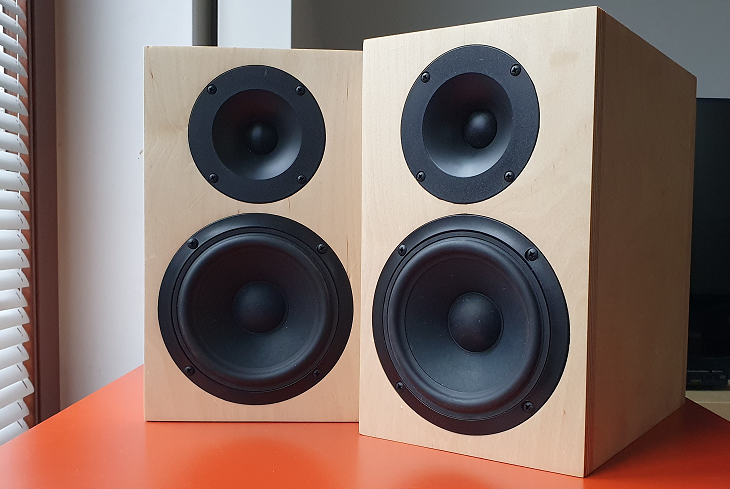
The Affordable Accuracy Monitor is dead, but I hope its memory lives on as a perfect example of what DIY can be. Let a thousand more spring up in its place.
Update 1/17/2025: Based on feedback from Dennis I have clarified how he originally performed the mod vs. the variant done by the poster on AudioKarma.


